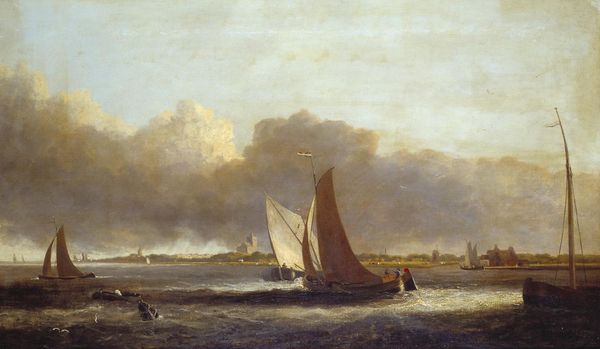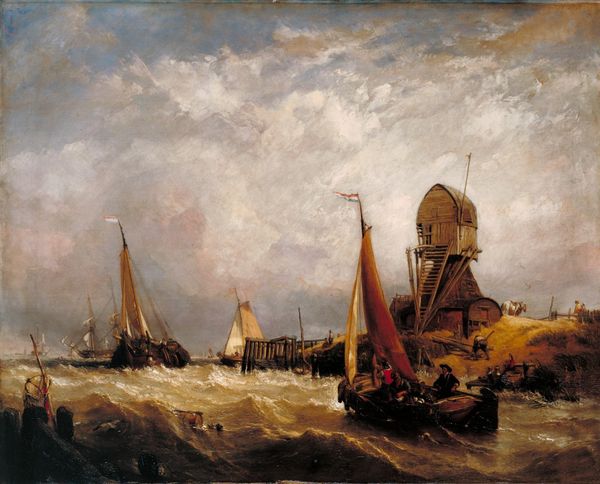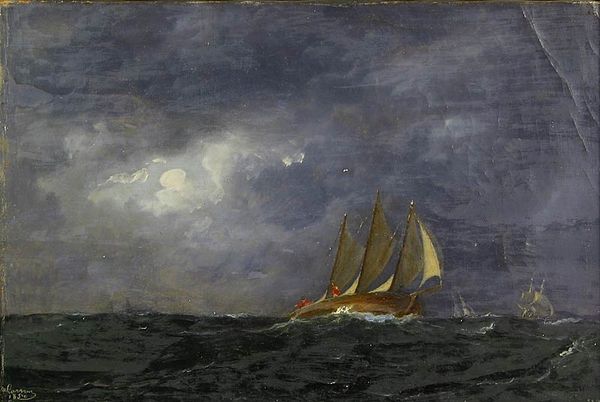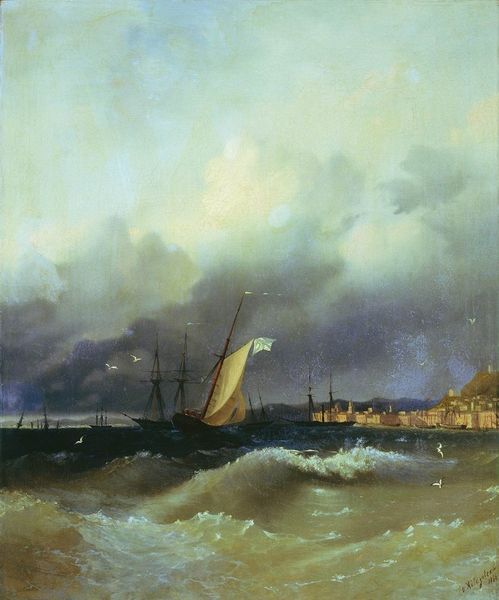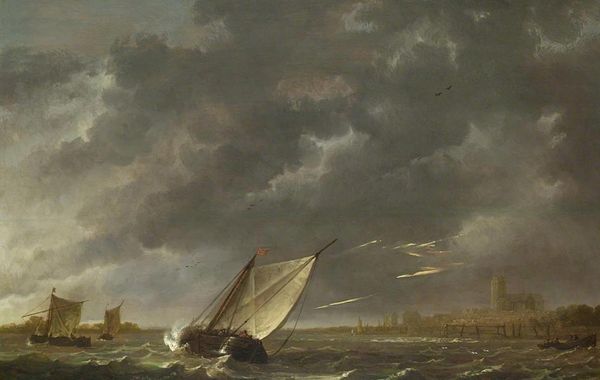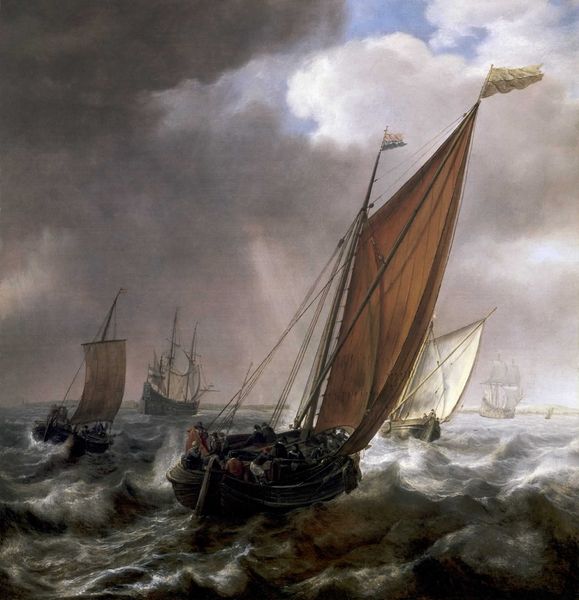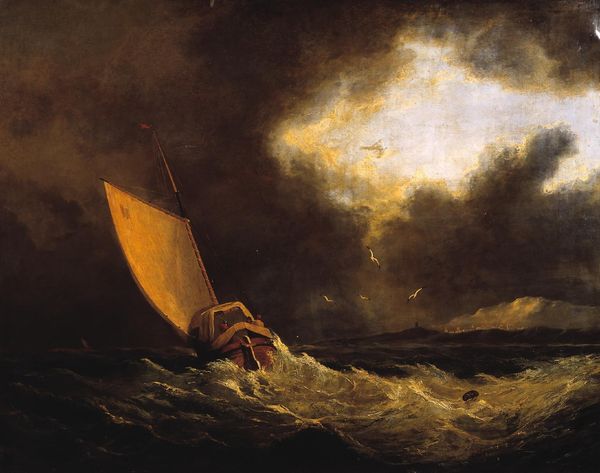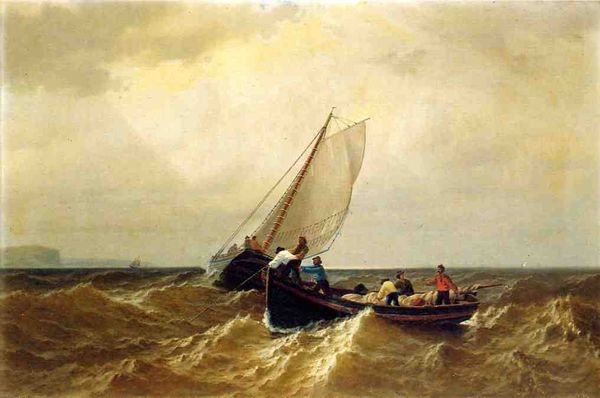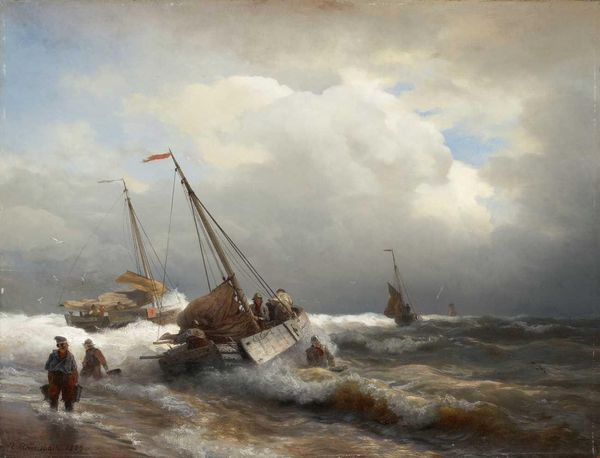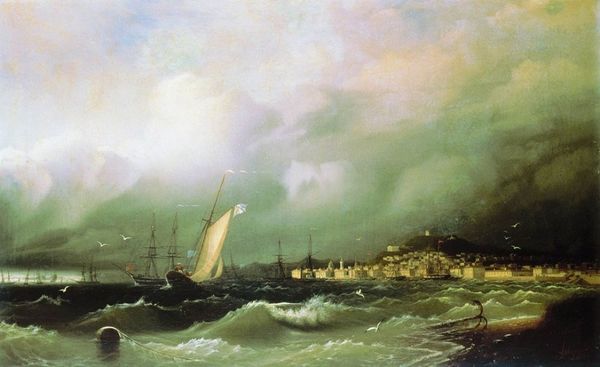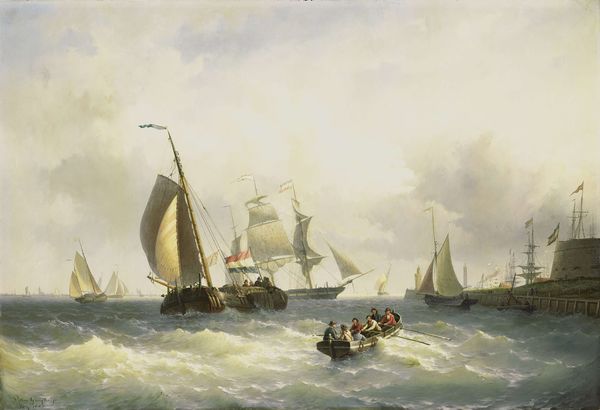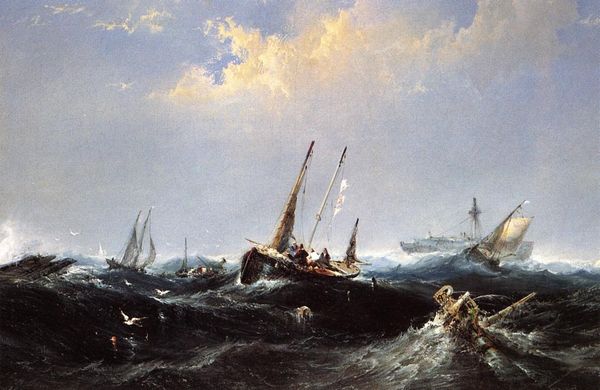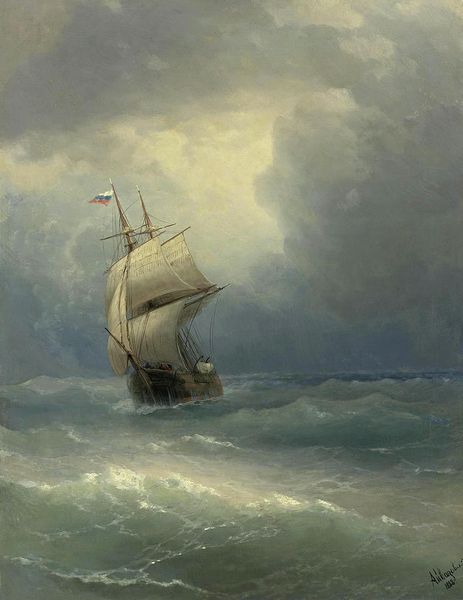
Copyright: Public domain
Curator: Alright, let's talk about "Rough Seas" by William Bradford, painted in 1863. What's your initial take? Editor: My first thought? Anxiety. The choppy water, the ominous clouds—it all feels rather turbulent, as if teetering on the edge of disaster. You feel how exposed these figures are to forces beyond their control, particularly during the Civil War. Curator: Precisely! I see it, too. The painting vibrates with that tension. You feel like you're right there in that tiny boat, desperately hoping those men know what they’re doing. Do you feel a slight romanticism too? Maybe the beauty of that turmoil has been softened somehow... Editor: Undoubtedly. Bradford employs a Realist style with a nod towards Romanticism. We observe genre-painting: scenes from daily life given an emotional, somewhat heightened treatment, that was fashionable at the time. Consider who these sailors were likely to be; what were their social positions and political inclinations in a war-ridden nation? Curator: So, do you see this artwork almost as social commentary? A statement regarding the average working person? Editor: I would argue that Bradford's choice to center these common seafarers positions their labor and experience at the forefront of the national narrative. Curator: I think you’re right! I wonder, however, if Bradford would like that framing or if he just sought the beauty in such a storm. And yet I can’t escape what he did achieve and evoke in me: That incredible beauty. What do you think of this interplay of realism and beauty? Editor: The picturesque quality serves to ennoble their struggle, making them participants of an epic, of the American experience—it is very thought-provoking. Curator: And the painting almost puts us in the middle of that, makes it very tangible. Editor: Yes. It humanizes this narrative and prompts viewers to question the social context and lived experience embedded in seemingly simple sea scenes. I mean, what does the title “Rough Seas” tell us beyond what we visually see? Curator: Food for thought, for sure. I love how a glimpse can become a story with endless twists.
Comments
No comments
Be the first to comment and join the conversation on the ultimate creative platform.
